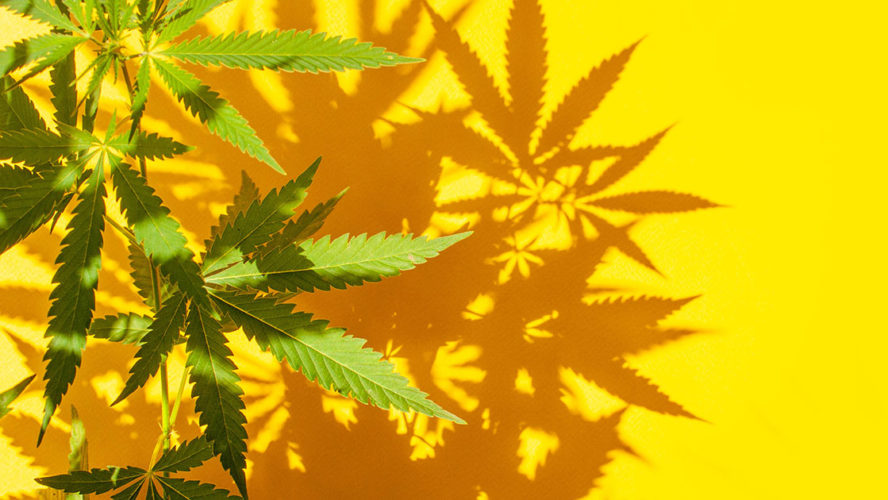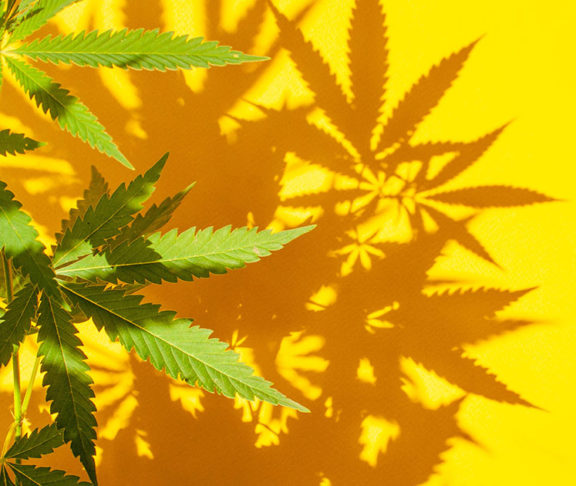Until recently, cannabis legalization efforts largely ignored the eye-opening history of the plant’s use and prohibition in America. People are often shocked to learn that cannabis, in all its forms, was a very important plant in the United States and abroad.

Dasheeda Dawson
Co-Founder & Chief Strategist, Cannabis Health Equity Movement (CHEM)™; Chair, Cannabis Regulators of Color Coalition (CRCC); Founder Author, The WeedHead™ & Company
We have really only been exposed to the “devil’s lettuce” or reefer madness that turned into the “war on drugs” and millions of dollars spent on DARE programs designed to scare teens into staying away from the world’s best “gateway drug.”
Growing up in pre-gentrified Brooklyn in the ‘80s, I know first-hand the dichotomous existence of saying “no” to drugs to avoid unwanted problems with the police or school, while living with a strict, but fun-loving, single mother and supportive grandparents in a stable and academically challenging home, which also smelled like weed and collard greens most of the time.
I can’t speak enough about the difficulties growing up in Brooklyn, living in the land of loud sirens and “suspects.” Never wanting to be caught up in either, I never used drugs, although it didn’t prevent me from being exposed to harmful and terrifying police harassment common in East New York.
Looking at my own history alone and the trauma endured to overcome the hood existence that helped shape me into the leader I am today, I was devastated to learn that this existence was an intentional result of strategic initiatives on the part of the government to stifle the growing popularity of the civil rights movement.
History ignored
Prior to the 1930s, cannabis was part of the American pharmacopeia, with products available over-the-counter, and well-known pharmaceutical companies manufacturing many of these cannabis products. Understanding that hemp is cannabis, too, the crop ultimately transitioned from an essential part of U.S. agriculture, with predominantly slaves cultivating and growing, to the unknown crop that it is today.
While Harry Angslinger was ranting about “darkies” and marijuana to the general public, he was conspicuously linked to developing industry ticoons, William Hearst and Lamont DuPont, both of whom suffered from poor growth because of the competition from hemp-derived textiles.
Through the Marijuana Tax Act of 1937, Anslinger was clever enough to kill two birds with one stone; by outlawing marijuana, he made only industrial hemp growth legal, but with heavily imposed taxes. While industrial hemp faded into near non-existence, overshadowed by the growth of paper and plastics, marijuana use persisted at a relatively equal rate among all races.
The war on drugs
Very shortly after the civil rights movement, America was responsible for the purposeful cover-up of physician-led opposition to the Controlled Substances Act of 1970, which deemed newly discovered delta-9-tetrahydrocannabinol (THC) a Schedule I illegal substance. This law, and Nixon’s public declaration of the “war on drugs” just over 50 years ago, ultimately led to millions of Americans and immigrants arrested primarily for cannabis possession.
Racially-biased cannabis criminalization perpetuated recidivism in communities, creating a prison pipeline in most hoods across America. We now have significant proof that the war on drugs was purposely designed to disproportionately impact BIPOC communities using racially-biased enforcement of criminalization in policing, sentencing, and collateral consequences, such as child custody. U.S. cannabis laws justified over-policing and continued disenfranchisement of communities of color — most acutely Black, Indigenous, and Latin communities.
To understand the totality of cannabis prohibition’s impact on individuals and communities, the Cannabis Health Equity Movement (CHEM) examines the four determinants of well-being: economic, environmental, human, and social. By stratifying well-being in this way, we can more tangibly understand the depth of direct and collateral consequences of local, state, and federal cannabis prohibition law enforcement on the overall well-being of these communities.
Even further, America’s laws heavily influenced the rest of the world and impacted other countries’ citizens as well, despite a rich history of traditional use for physical, mental, and spiritual benefit.
In short, our government, in an effort to maintain the persisting racial inequities within our borders, essentially denied the legacy of this plant by ignoring history and putting in place a new story based in fear. Rather than studying, learning, and innovating around the more than 50,000 uses of cannabis, our country has spent nearly 100 years demonizing the plant using deeply rooted racial biases to fuel the madness.
Health equity denied
Meanwhile, 1 in 1.5 adults is sick with something, and it’s not surprising that Black adults are the sickest, which manifested in 1.4 times more likelihood of death from COVID-19. My passion for revealing the history of cannabis is fueled by my own fragility with an “invisible” autoimmune disorder that is largely symptomatic and debilitating only when my endocannabinoid system (ECS) is not healthy.
The ECS, despite being the largest body of receptors in the human body (and other mammals), has remained hidden and unknown to today’s clinicians because of the heavy influence of America on the global drug policies surrounding delta-9 THC. Struggling with early signs of multiple sclerosis, I’m dismayed at how much resistance still exists within the “historical” national health professional associations, despite conducting research and publishing studies that refute their own assertions about the harms of cannabis legalization.
For me, this is deeply personal because my history of urban trauma and ongoing suffering as a patient is directly linked with cannabis prohibition. Although California is celebrating 25 years of legalized medical cannabis through Proposition 215, my own legacy with this plant is still being denied because even in California, trusted resources for healthcare decisions are largely still uneducated about the ECS and the various ways to resolve deficiencies or excess activity.
But history and statistics also show this is deeply personal for millions of people suffering from something that is directly or indirectly caused by ECS dysfunction, in many cases driven by economic, environmental, human, and social injuries from government laws. We all have the right to well-being and prosperity, and that starts with being able to care for arguably the most important system in the human body.
By prohibiting cannabis as a potential option for research and treatment, the government has predetermined a poor health outcome for us, most especially our sickest and most disabled individuals.
Backed by science
Thankfully, the science of cannabis has always been at the core of the plant’s ongoing use despite five decades of the harshest laws impacting millions of people for simple possession. Although we are still learning about cannabis science, without cannabinoids, we would not have discovered our ECS, which unlocks so much of the mystery behind the plant’s efficacious potential as a medicinal supplement or pharmaceutical replacement for major physiological disorders.
When we look beyond the medical uses of the plant historically, we also uncover agricultural, industrial, and nutritional uses from the past that would be substantial innovations realized today, significantly impacting what we define as the CHEM Pillars of Health Equity. These pillars align closely with the four determinants of well-being — economic, environmental, human and social — which leads us to understand that the solution to diminishing cannabis opposition from the medical and public health sector is simple.
We must demonstrate that the deliberate utility of cannabis innovations as a tool to remediate the prohibition injuries of the past is a non-negotiable first requirement of any legal framework. And, for those who aim to be good stewards in the developing industry, acting as social equity agents, this is the point of entry to earn your badge.
More importantly, we really need health professionals and clinicians to set aside the false narratives, and to re-educate themselves on the science behind cannabis and social injustice history as they aim to improve outcomes for their patients. For millions of people suffering, our lives depend on it.
Building back
As a Black woman, I am deeply committed to providing leadership in the public and private sectors to demonstrate how our knowledge of cannabis science and the legacy of its traditional use, in this country and abroad, can create regulatory frameworks and business ecosystems that significantly impact the sustainable health and wealth of all communities, most especially the communities that were purposely targeted and destroyed through cannabis prohibition.
I am continuously inspired by my work with CHEM, including the Association for Cannabis Health Equity and Medicine (ACHEM). Led by the brilliant and generous Dr. Rachel Knox, along with her family of doctors — endocannabinologists specifically — ACHEM has brought a combined 75+ years of experience across emergency medicine, anesthesiology, family medicine, and preventative medicine to the cannabis industry.
As a cannabis patient of ACHEM’s American Cannabinoid Clinics, I am grateful for their service to this industry and over 60,000 patients, and countless people across the world, now with the means to reclaim their legacy in cannabis through the Knox family’s education, empathy, and empowerment provided over the past six years. This is the work to build the future of cannabis that we deserve after nearly 100 years of the legacy denied.

